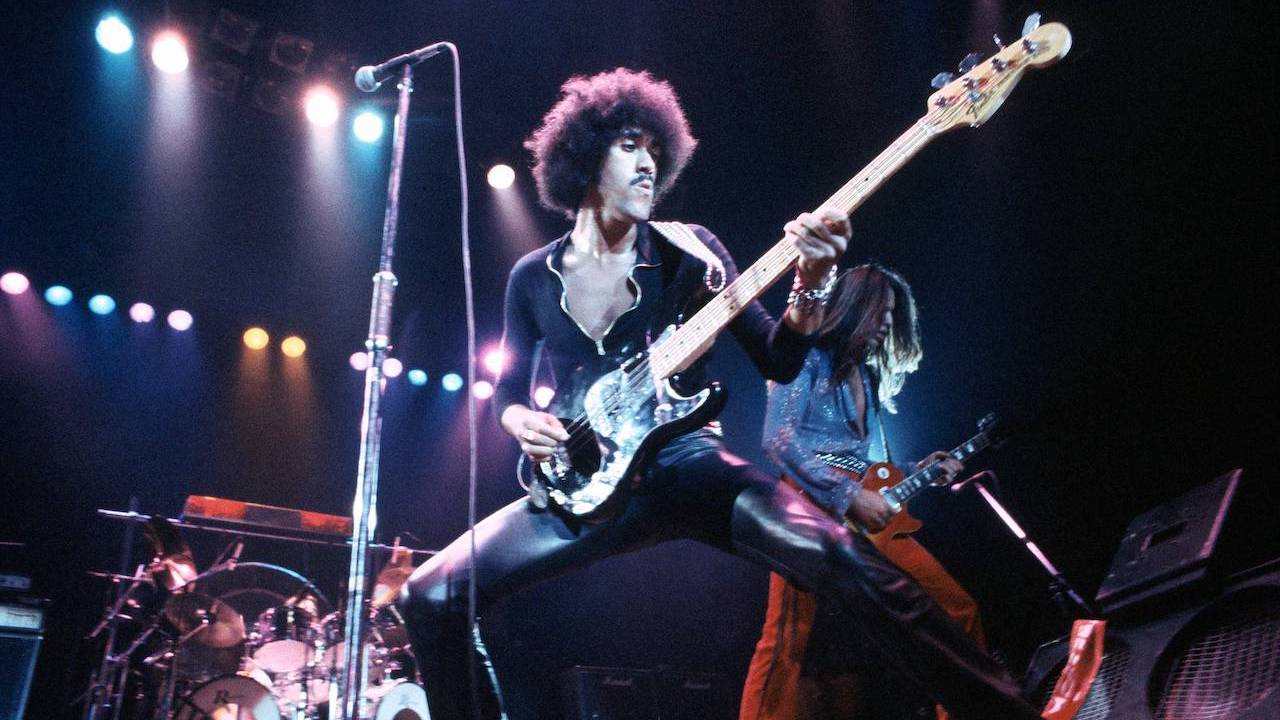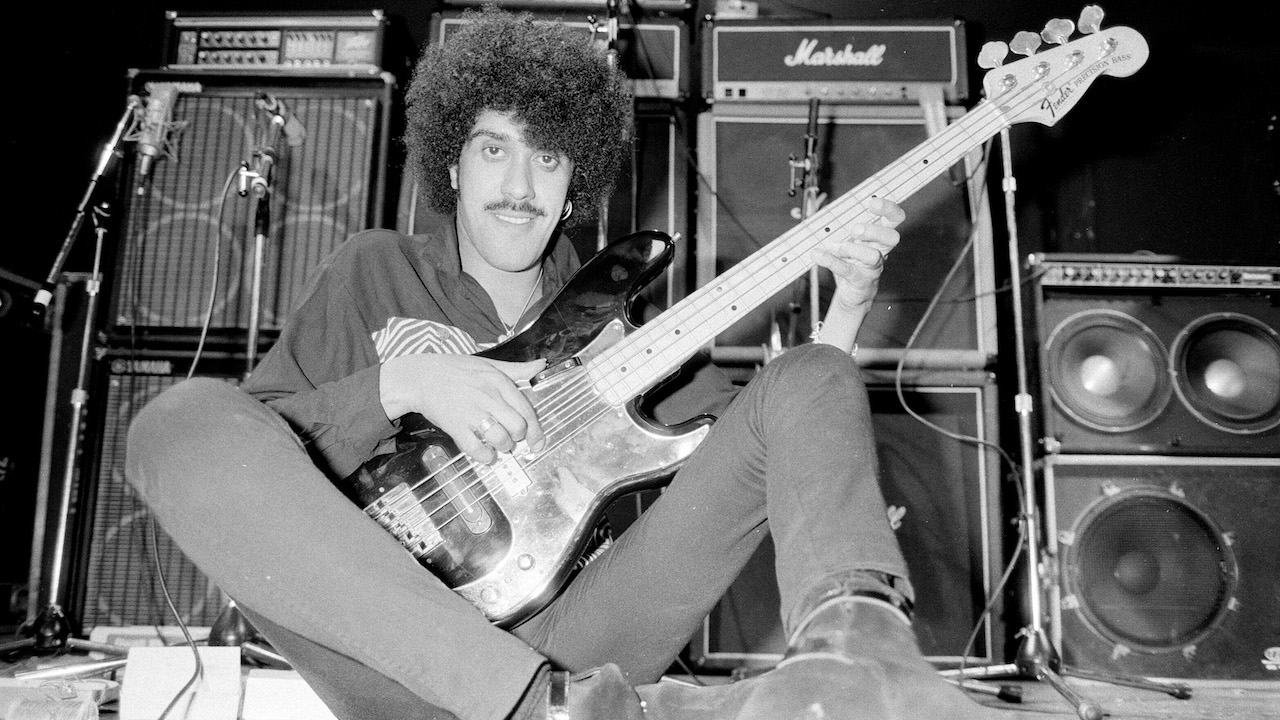“People always want to go to extremes. And if you go to the edge, you must be prepared to fall off”: Phil Lynott’s 5 best basslines with Thin Lizzy and beyond
Six foot plus of leather and lust, Phil Lynott was the consummate rock bassist. These are his 5 best basslines

Phil Lynott was the consummate rock bassist: always holding Thin Lizzy together, driving things along and just occasionally reminding everyone that there's more to rock bass guitar than root notes and unison riffing.
As a bassist, he wasn't a technician, but he didn't need to be; his basslines always sat perfectly between the drums and the rampant, duelling guitars. He specialised in a warm, middle-heavy bass tone that perfectly anchored his fellow guitarists’ playing.
Looking for an example of some deft chops? His most identifiable bassline has to be Dancing In The Moonlight, with that swinging, jazz-inflected chorus and walking lines under the fadeout, proving that he wasn't all whiskey-soaked eighth note roots.
1980's Chinatown is another good starting point as Lynott doubles up the fast descending guitar riff that spans the neck, shifting through two octaves.
Lynott used several basses through his career, but for his fans, his trusty black Fender Precision with a mirrored scratchplate was the favoured instrument. He used the scratchplate to highlight members of the crowd from his vantage point on the stage, which he bestrode like a leather-clad god.
While his flamboyant style and talent made him a star, it was Lynott’s astonishing appetite for drugs that earned his place in rock notoriety. As the man himself told Classic Rock, “How many times do you say you’re going to give something up and then don’t? People always want to go to extremes. And if you go to the edge, you must be prepared to fall off. And lots of guys have.”
Lynott’s struggle with stimulants caught up with him and he was admitted to hospital on Christmas Day, 1985. He died of heart failure and pneumonia 10 days later, aged only 36.
Get The Pick Newsletter
All the latest guitar news, interviews, lessons, reviews, deals and more, direct to your inbox!

Always more extravagant as a singer than a bassist, Phil Lynott’s bass playing always served the songs, but that doesn't mean he couldn't lay down some tasty lines when he needed to.
Here, we run through his five greatest basslines.
1. Dancing in the Moonlight (Bad Reputation, 1977)
The standout single from one of the band's best albums shows just what a great bassist Phil Lynott was.
Its slinky, swinging riff is instantly recognisable, memorable and hummable: all the qualities you want in a bass hook.
And we love the way he lays down some walking lines in the outro. The man had groove as well as badass attitude by the bucketful.
2. The Boys Are Back in Town (Jailbreak, 1976)
On this quintessential Lizzy song, Lynott confines himself to root notes with some added embellishments at bar ends, although there isn't much room for showing off in the choruses.
Note how the bass drives the song through the verses, with the guitars holding back and Lynott providing an expert, almost funky bassline.
3. Waiting for an Alibi (Black Rose, 1979)
This hit tune from Black Rose saw the return of Irish firebrand Gary Moore. Showing all of the trademarks of one of the hottest rock acts of the ’70s – harmony guitars, flashy solos, pushed rhythms and driving basslines. Not to mention Phil Lynott’s tough vocal delivery and backstreet lyrics.
4. Jailbreak (Live and Dangerous, 1976)
Another much-loved Lizzy tune, Jailbreak opened the Live and Dangerous album, and with good reason – it's stuffed full of excitement.
The live version is probably the best place to start, in fact, as Lynott's bass is mixed high enough for his grasp of the role of the bass in the onstage dynamic to reveal itself perfectly.
5. Out in the Fields (Run For Cover, 1985)
This song is best known for Gary Moore's phenomenal guitar solo, but keep an ear out for the bass part – which is thought to be Lynott's line overlaid with a synth-generated sound. The video, with Lynott looking sharp, belies the fact that it was shot so near the end of his life.

Nick Wells was the Editor of Bass Guitar magazine from 2009 to 2011, before making strides into the world of Artist Relations with Sheldon Dingwall and Dingwall Guitars. He's also the producer of bass-centric documentaries, Walking the Changes and Beneath the Bassline, as well as Production Manager and Artist Liaison for ScottsBassLessons. In his free time, you'll find him jumping around his bedroom to Kool & The Gang while hammering the life out of his P-Bass.
“I asked him to get me four bass strings because I only had a $29 guitar from Sears”: Bootsy Collins is one of the all-time bass greats, but he started out on guitar. Here’s the sole reason why he switched
“I got that bass for $50 off this coke dealer. I don’t know what Jaco did to it, but he totally messed up the insides!” How Cro-Mags’ Harley Flanagan went from buying a Jaco Pastorius bass on the street to fronting one of hardcore’s most influential bands



![Gary Moore feat. Phil Lynott - Out In The Fields [HD] - YouTube](https://img.youtube.com/vi/VbUiKj9DML4/maxresdefault.jpg)










